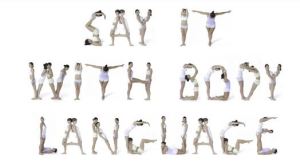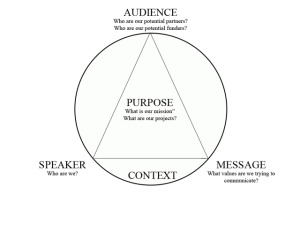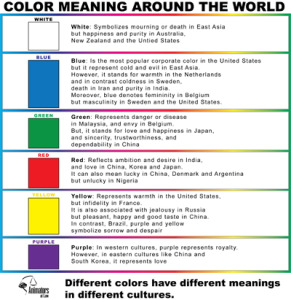Ryan Greene ’15- Media Arts and Entertainment, Broadcast & New Media, PWS Minor
 If you’re an Elon student, “networking” is a word you hear almost on a daily basis. Your professors and internship coordinators tell you to “network, network, network” everywhere you go and, to be honest, before this summer networking was something I practiced, but never really preached to other students. Now, being a senior with one year left until I enter the so-called “real world,” I am making a public declaration: Networking is a college student’s best friend.
If you’re an Elon student, “networking” is a word you hear almost on a daily basis. Your professors and internship coordinators tell you to “network, network, network” everywhere you go and, to be honest, before this summer networking was something I practiced, but never really preached to other students. Now, being a senior with one year left until I enter the so-called “real world,” I am making a public declaration: Networking is a college student’s best friend.
I’ve had five internships over the course of my college career and I have tried to meet as many people as possible at each and every one of them. Although the thought of being a full-fledged adult in a few months makes my heart pound, I really do think the networking I’ve done is going to help me a lot when it comes to the job search. It’s taken me three years to really understand why networking is so crucial when it comes to jumpstarting a career after college and here are the top five tips I’ve learned along the way.
Start Early
Day One: start learning everyone’s names and what they do. At bigger companies this can take some time, so starting on the first day will help you learn more about the business you just joined and who does what. This will also help you get more comfortable with where you are working and it will allow you learn more about the work place environment you just joined. Once you figure out what the work place environment is like, you can determine which people are appropriate for you to approach for informational interviews or shadowing opportunities.
Reaching out to these people early also shows your co-workers in the office what you are interested in. If you are interested in graphic design and you reach out to the person who is in charge of that or who works in that department, your supervisor can start to gauge your interests and you might be able to work in that area more often. It’s a win-win situation: the person you are shadowing gets some extra help and you get to learn about a specific interest of yours.
Don’t be Afraid
People LOVE talking about what they do, so don’t feel intimated asking someone to explain a part of their job to you or go over something you don’t quite understand. I am completely aware that this is way easier said than done, so my biggest suggestion is to start small. If there is one person in the office that you feel really comfortable with, start with them. Even if their job isn’t something you are 100% interested in, it is still a great way to learn more about where you are and how things function in the office.
If you’re still a little hesitant approaching someone directly, I’ve learned that sending an e-mail is a good stepping-stone into networking. Spend some time composing an email expressing why you are interested in learning more about someone’s job. Unlike an in-person conversation, e-mail gives you a more time to figure out the exact language you want to use. This means you can make sure your message is perfect and the wording matches the tone of how people communicate with one another around the office.
Do Your Research
Once you land that informational interview or shadowing opportunity (congrats, btw!) look up as much as you can before you get there. Do your homework- use LinkedIn to look up their background and where they have been/what they have done before. This will give you a better idea of what to ask during your meeting. You don’t want to waste their time by asking questions about information you can find with a simple Google search. Make the most of your meeting by asking follow-up questions to what you found online.
Bonus: If you work into the conversation that you already know a little bit about your colleague’s background, it shows you cared enough to really prepare for your informational interview or shadowing opportunity. This will set a professional tone between yourself and the person you are meeting with, which shows that you are really trying to fit into the company’s work environment. Because what person goes into an interview without doing some research? Only someone who doesn’t want that job enough to prepare for it, that’s who.
Take Notes
If you’ve ever said to yourself, “Oh, I will remember this later” and don’t write it down, you know that is the kiss of death. You almost NEVER remember it later. Instead of being mad at yourself at the end of the day, take notes during your informational. Go old school and bring a notebook and paper. I personally think taking notes on your phone is tacky because no one actually knows if you are taking notes or texting your friends. Remember the communication model? Your phone would be the “noise” in this case. It will distract you from really listening to this valuable conversation.
Also, taking notes by hand shows that you are really using your listen skills and pulling the information you need from what they are saying. Your colleague can see what specific information you are pulling from this meeting. There have also been studies that show writing notes by hand helps you memorize things (it also helps that you will have these notes to refer to if you need them).
Follow Up
In my opinion, this is the most important tip. It’s easy to lose touch with people after a while but DO NOT let that happen with people you meet at your internship. Make sure you stay in touch with everyone you meet. However, there is a fine line between active and aggressive when it comes to keeping up with professional relationships. My biggest advice is to send an email or a text (whatever fits in better with the work environment) every six-eight weeks to the people you were closest with in the office. This makes sure you stay on people’s minds, but it is also spaced out enough that you aren’t flooding their inboxes with messages.
The other thing I learned when it comes to this stage of the networking game is to be patient. Once you leave an office environment and go back to school or back home you quickly forget how jam-packed your days were when you interned full time. That being said, don’t be offended if you don’t get a response right away. Give them a few days to get back to you and even if they don’t get back to you, they at least saw that you made the effort, which in the long run can mean a lot.




 As mentioned on Monday, there is lots going on! Aside from their events, the Writing Center is an important place to visit on a daily basis. Try to remember some of the following tips when planning a visit!
As mentioned on Monday, there is lots going on! Aside from their events, the Writing Center is an important place to visit on a daily basis. Try to remember some of the following tips when planning a visit! As we discussed on Monday, there are a number of cross-cultural factors to consider within visual rhetoric. This same theory can apply to
As we discussed on Monday, there are a number of cross-cultural factors to consider within visual rhetoric. This same theory can apply to 




